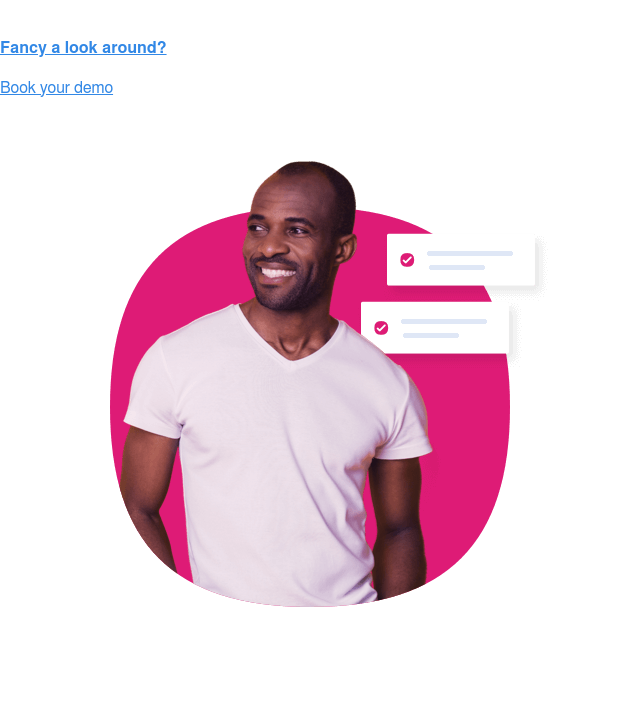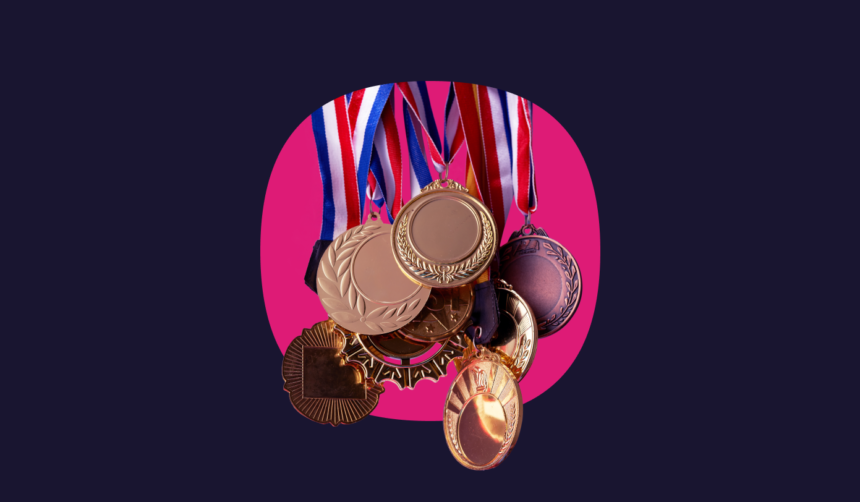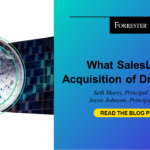What makes a marketing or ad campaign stop people in their tracks, grabbing and holding their attention like a particularly tenacious terrier?
A brilliant big idea and excellent execution are essential, but a creative strategy based on the right audience insights is equally important. Without that you’re basically hoping your idea will work, when knowing would be a whole lot better.
That’s where GWI’s consumer insights come in, providing the rock-solid audience data marketers and advertising people need to raise their campaigns from meh to marvelous.
We can offer tips on everything from ad targeting to the biggest consumer trends. And we can suggest ways to get the best from a certain AI bot that spits out answers on command (unless you happen to live in Italy).
Today many must-see marketing campaigns use consumer insights to steer their strategy, including the 16 examples we’ve gathered together here. If you need to kickstart your next creative brainstorming sesh, this blog could be just the inspiration you’ve been looking for.
But before we dive in, let’s get clear on what makes a great marketing campaign in the first place.
What makes a great marketing campaign?
There’s definitely no ”one size fits all” answer to this, but the chances are that data will play an important part at every stage – from understanding your market and your audience, to identifying the right sort of content/messages and channels to use, all the way through to analyzing your campaign’s success.
16 of the best advertising and marketing campaigns from 2023
- Orange France
- Flo Health
- Barbie
- GTA 6
- Diablo 4
- Hilton Hotels
- Tinder
- Arsenal
- Heinz
- KFC
- Nike
- Yorkshire Tea
- Monzo
- Workday
- Netflix
- Tony’s Chocoloney
1. Orange France
We covered this viral smash hit campaign soon after it launched, but it’s definitely worth another look. At first glance you might think this ad for a mobile network is just a cool highlight reel of well-known male soccer players, but all is not as it seems.
While we think we’re seeing the likes of Mbappe, Greizmann and Coman, it’s actually made using cleverly edited footage of female players scoring big.
With the help of VFX and AI deepfake technology, the ads’ makers superimposed men’s faces onto the bodies of the French women’s team, effortlessly highlighting unconscious bias and even outright sexism in sports in the process.
What makes this so clever is it reflects the insight that 44% of sports fans think women’s sports should be highlighted more by the media. It even taps into the exponential rise in interest in AI, with a hefty 60% of consumers saying they’re excited about the development of AI.
2. Flo Health
Flo Health is the world’s most popular female health app. Over 300 million women have downloaded Flo, and 55 million use it on a monthly basis.
The app’s Pregnancy mode has revolutionized the way women can access important info, offering digestible and super-engaging Instagram-style ‘stories’ – rather than the more usual articles – tailored to the exact stage of their pregnancy.
For example, Flo Health created a series of award-winning daily stories with a countdown to a woman’s due date and extra information divided into seven types, one for each day of the week.
Why is this such a smart approach? Again it comes down to audience insights; 25% of women have used a health or fitness app in the last month, so accessing information in this way is already really familiar to millions. In fact, 40% of women say researching health issues or healthcare products is an important reason for using the internet – something they’re 31% more likely to say than men.
3. Barbie
This stellar campaign has rightly been described as the marketing event of the century (er, so far), and while rival studio execs have rather sourly estimated it may have cost $150M – that’s on top of the movie’s $145M production budget — the investment has certainly paid off.
While staying tight-lipped on specifics, the studio has described the campaign as being built around a “breadcrumb strategy”, giving people little tastes of the movie to pique their curiosity and drive conversation.
Like pretty much every campaign, the result combined earned media (like social media buzz) and paid media (such as a trailer spot), with the latter in particular helping the campaign to quickly take on a life of its own.
Not altogether surprisingly, one of the audiences most likely to watch Barbie are people who wear highlighter makeup. Highlighter wearers are 118% more likely than the average consumer to say they were interested in watching Barbie this year – so its ultra-feminine marketing aesthetic was certainly on point.
4. Grand Theft Auto 6
Grand Theft Auto – aka GTA – is a hyper-popular video game franchise, with its next iteration set to launch in 2025. People have been playing GTA5 since 2013 so GTA6 really is a highly anticipated release.
Its developers – Rockstar Games – dropped a YouTube teaser in December 2023 (slightly ahead of the planned release date due to an unauthorized leak). This racked up over 19M views in just two weeks thanks to its super-cinematic graphics that pay homage to real viral clips from Florida.
Before the trailer even launched, studios from across the entire industry started riding the wave by referencing the game’s designs, showing just how culturally significant a new version of GTA can be. To emphasize this, Rockstar’s social page archived all posts, except for the trailer teaser image.
In fact the entire trailer release campaign was very much like the release of a blockbuster film, hardly surprising when 62% of GTA fans say they’re interested in films/cinema, 27% more so than the average consumer. Again, insights underpin strategy.
5. Diablo IV
The release of the dungeon-crawler game Diablo 4 faced a similar challenge to GTA6. It was a decade since the previous version came out, so developers Blizzard Entertainment and their ad agency 72andSunny had to appeal to both existing fans and attract new players to the franchise.
The first step was a positioning exercise to understand “What is Diablo and what does it stand for?” that became the basis of all subsequent marketing work of Diablo IV.
That involved everything from painting Diablo IV scenes on to the vaults of a French gothic cathedral, to bringing the game’s monsters to life in a Chloé Zhao-directed, live-action trailer. Each bit of creative aimed to elevate Diablo IV from just a gaming property to a pop culture phenomenon and the preeminent entertainment source of the year.
Cathedral of Diablo not only won a Cannes Lions Bronze and two Cubes at the ADC Awards, but it was also the location of the video for Halsey and SUGA’s dark pop single, Lilith. That makes massive sense, seeing that Diablo fans are 32% more likely than the average consumer to like pop music.
6. Hilton Hotels
Everyone knows attention spans online are shorter than ever, right? Er, wrong – or at least, not if the success of Hilton Hotel’s 10 minute TikTok video is anything to go by.
@hilton Unexpected & amazing things can happen when you stay, and we want you to stay with us for 10 minutes. Yup, we made a 10-minute TikTok AND we’re giving away 10M Hilton Honors Points + more. #HiltonStayFor10 #HiltonForTheStay ♬ Hilton’s 10-Minute Stay – Hilton
The reason it works is because it takes people on a journey – literally – in the company of influencer Paris Hilton and other creators, all – crucially – using their own voice and style in their segments, with a clear focus on the stay, not the destination.
It’s also delightfully irreverent and self-deprecating, gently poking fun at the whole idea of a 10 minute TikTok advert (as one character in the video exclaims, “10 minutes on TikTok is like 3 years in the real world”) while simultaneously making a great case for choosing Hilton.
But there’s another side to this that makes long-form video a great choice, one based on audience insights. Research shows an impressive 44% of travelers who plan to stay in a Hilton hotel in the next 12 months have watched a long-form video online in the last week.
And why TikTok when other platforms are available and more usually associated with longer videos? Again audience insights have the answer. In fact 37% of travelers who plan to stay in a Hilton hotel in the next 12 months use TikTok at least monthly, and they’re 43% more likely than the average traveler to use it.
7. Tinder
Tinder’s ‘It starts with a swipe’ campaign shows the platform working hard to change its image as a place where Gen Zs go to hook-up. Nothing wrong with that of course, but Tinder’s first global campaign aims to reposition the app as a place for Gen Z to make meaningful connections.
And with good reason – data shows that long-term relationships are Tinder members’ number one dating goal, with 31% of Gen Z members looking for a long term relationship (going up to 40% with all members globally) and only 14% looking for a short-term connection.
With around a quarter of single Gen Z going on dates at least monthly, and 27% saying they wanted to find love in 2024 (more than any other generation) then focusing on longer term commitment makes complete sense.
It’s the same story we see in all the examples here; insights inform strategy, which informs creative.
8. Arsenal
Forget the old days when football fashion meant club scarves and bobble hats. Today the cross-over between Premier League clubs and premier fashion is big business – with big audiences.
Take the mighty Arsenal F.C., one of the U.K.’s biggest clubs. 36% of Arsenal fans say they’re interested in fashion – that’s 28% more so than the average sports fan – while a hefty 58% of Arsenal fans have purchased luxury fashion in the last year.
Insights like those show there’s money to be made, so to support the merchandising campaign for their new third strip kit, Arsenal and their official kit supplier Adidas put together a campaign that connects players and fans in one sartorial community.
The launch video – set in and around Arsenal’s ground includes a local kebab shop and shows male and female players and fans alike looking great in the new strip. It’s also pretty playful, with a smoochy, nostalgic French soundtrack, all under the strapline “Europe’s never looked so good” – a nod to Arsenal’s ambitions in their return to the UEFA Champions League for the first time in over half a decade. .
9. Heinz
Imagine you love Heinz tomato ketchup so much you want to decorate your home in the exact same shade of red. Well imagine no more, because in 2023 Heinz partnered with Lick, the color-centric home décor brand, to create a limited-edition matt interior paint in the exact same shade – wittily known as ‘Red HTK 57’. Talk about a brilliant, imaginative brand extension.
In case you’re thinking, “very clever but a bit of a gimmick”, allow us to highlight a couple of audience insights that make this imaginative, entertaining brand extension a sensible idea.
Research shows 39% of those who buy condiments during the summer – peak BBQ season – are interested in DIY/home improvements, while 54% of Americans who’re interested in grilling/barbequing are also into DIY/home improvements.
Clearly the two sets of interests overlap, showing there really is method in Heinz’s madness.
10. KFC
Is the customer always right? Of course… except when they’re not. That’s the thinking behind KFC’s decision to not offer a turkey Zinger burger over the Holiday period.
Yes, customers have repeatedly asked for it, and no, KFC isn’t budging. As they point out: KFC is a fried chicken chain, with no other forms of poultry in sight.
What really matters with this campaign is that KFC is showing they listen to their customers, even if they don’t always act on what they’re saying. It’s proof of a relationship that goes way deeper than just transactions, with data showing that a fifth of KFC fans are likely to advocate for a brand if they feel they have a personal relationship with it.
At the same time the data shows that almost half of KFC fans want brands to listen to customer feedback. In this particular case KFC clearly did listen – as proved by this campaign – they just decided not to act on what they heard. Maybe next year.
11. Nike
To celebrate the ninth Women’s World Cup, Nike’s “What The Football” campaign uses a series of ads starring players like Alex Morgan and Megan Rapinoe from team U.S.A, Brazil’s Debinha, and Australia’s Sam Kerr.
The first film of the series begins where many soccer-watching Americans first fell in love with the women’s game: watching Brandi Chastain put away the perfect penalty, then rip her jersey off in celebration as the US Women’s National Team won the 1999 World Cup.
In the ad, a father and daughter watch Chastain’s penalty together. Then, via a cheeky plot twist, the father is catapulted into the world of today, one teaming with elite women’s players.
Why has Nike taken this approach? Again the answer is in the data. A sizable 31% of sports fans say women’s sport is exciting to watch, so clearly the Women’s World Cup is a brilliant opportunity. But there’s more: research shows that consumers who buy Nike are 16% more likely than the average consumer to say women’s sport is exciting to watch, making the choice of this tournament even more appropriate.
12. Yorkshire Tea
How much do we like this charmingly cheeky campaign? Almost as much as we like the product it promotes.
Yorkshire Tea’s “Pack yer bags” campaign – starring Skipton Alfie – focuses on a young holidaymaker from Yorkshire who wants to do Ibiza “proper”.
The music – created by the genuinely hip Ninja Tune label – and video hilariously and skillfully include all the tropes and cliches of a classic first teenage holiday. Instead of getting drunk, the video’s star invites everyone to “Let’s get lightly caffeinated!” That’s a sentiment we can get behind.
But just to be serious for a second, all this is based on solid audience insights. A fifth of consumers in the UK and Canada who enjoy beach holidays drink Yorkshire tea. In fact, they’re 17% more likely to drink Yorkshire tea than the average consumer, while international vacation planners are 27% more likely to drink Yorkshire tea than average.
13. Monzo
Online bank Monzo took an unexpected approach in this data-driven out-of-home campaign that takes a lighthearted look at ”how the nation Monzo’d its way through 2023”.
The resulting ads featured copy like “Well done Milton Keynes: you went to Nandos more than anywhere else in the UK”, and “London: you were literally the only place to go to Prett more than Gregs.”
Admittedly the various fast food restaurants named in the ads above might not mean much to our non-UK readers, but the whole point of this campaign is its local focus. By digging into their bespoke first party data and leveraging the results on LinkedIn and Twitter/X, Monzo created a campaign that speaks directly to the tastes of individual places.
Consumer data also justifies the entire campaign. 48% of Monzo users say they want brands to be smart – something Monzo can definitely claim here – while Monzo users are 38% more likely to discover brands via billboards or posters (as used here) compared to the UK average.
14. Workday
This hilarious Superbowl ad pokes fun at the modern tendency to call a high performing coworker a “rockstar”, with a succession of genuine rockstars humorously taking exception to the misappropriation of their hard-earned status. Starring Gary Clark Jr., Billy Idol, Joan Jett, Ozzy Osbourne, and Kiss’s Paul Stanley, it’s the perfect infotainment to enjoy during the Big Game.
But the premise isn’t as random as it might initially feel, and once again data makes clear why: around 3 in 10 people working in HR and finance – Workday’s core market – like rock music, so the rockstar reference makes complete sense. Above all it’s just great fun that effortlessly builds the Workday brand.
If you’ve ever wondered what Ozzy Osbourne – or “Ozwald” as he introduces himself to his new colleagues – would look like in a shirt and tie, this is your chance.
15. Netflix
Netflix’s promotional Streamberry site, inspired by the parody version of the streaming platform in Black Mirror episode Joan Is Awful, used images of real viewers as part of its marketing campaign in the UK
The Streamberry site allows users to “sign up” to the platform, which looks remarkably like Netflix’s own. Signing up requires you to upload or take a photo of yourself which “may end up on a billboard” — an instant red flag for anyone who’s watched the Black Mirror episode.
What makes this particularly clever is the audience insights that support the campaign’s concept. Around a third of Netflix users say successful personalized marketing should involve changing how people can choose a product/service, while 31% of Netflix users want brands to offer customized/personalized products, 16% more likely than the average consumer.
At the same time, 42% of Netflix users want brands to make them feel valued, 20% more than the average consumer – and what could make someone feel more valued than featuring their image on a billboard?
16. Tony’s Chocoloney
Lastly comes this fresh new approach to marketing from a rapidly growing chocolate brand.
Tony’s Chocolonely is having a huge spike in popularity in the UK (our Core Plus data shows it’s one of the fastest-growing brands in Britain) in spite of only starting to use paid media very recently. Previously they relied exclusively on earned and organic channels.
So while this isn’t a marketing campaign as such, it’s an interesting case study in word-of-mouth, something that super-suitable as the data shows 36% of Tony’s Chocolonely fans find out about new brands and products through word of mouth, 12% more likely than the average consumer.
Last words
We hope you enjoyed our quick roundup of some of the most interesting and engaging marketing campaigns in recent months. For many brands It was an interesting yet challenging time to be a marketer, with budget pressure combined with massive expectations and rapidly changing market conditions. But these 16 examples show that with a little imagination, marketers can still make magic happen.

Marketing campaigns FAQs
What is a marketing campaign?
A marketing campaign is a structured effort to promote a brand’s products or services through different types of media, such as television, radio, print, and online platforms.
What makes a good marketing campaign?
Amongst many potential hallmarks of a good campaign, you’ll almost certainly want to highlight the uniqueness of your brand, emphasize its unique selling points, and choose the right channel to reach the right audience.
How do you create a good marketing campaign?
There’s no single “right” way, but the process will likely involve understanding the scope of your marketing plan, setting clear marketing campaign objectives, identifying a target audience, creating a campaign strategy and message, picking a marketing medium or media for delivery, and setting a marketing campaign timeline.









